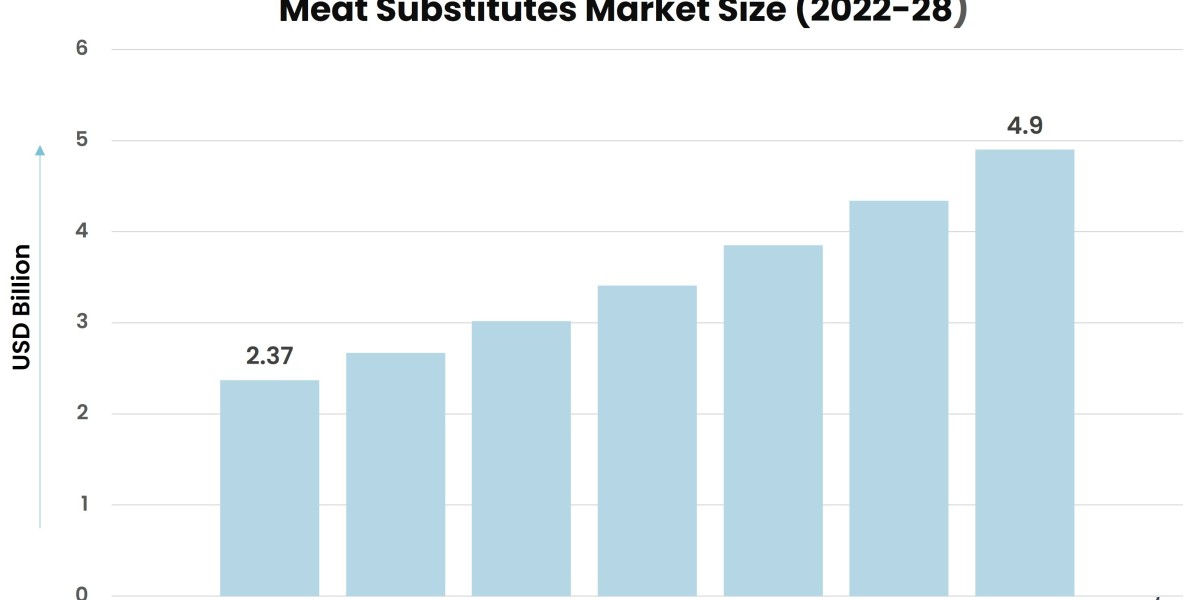According to Stratview Research, the meat substitutes market was estimated at USD 2.37 billion in 2022 and is likely to grow at a CAGR of 12.91% during 2023-2028 to reach USD 4.9 billion in 2028.
In an era marked by a growing consciousness about health, sustainability, and ethical choices, the meat substitutes market has emerged as a dynamic and innovative force. The appeal of plant-powered proteins is no longer confined to vegetarians and vegans but has transcended dietary preferences to cater to a broader spectrum of consumers. This article delves into the trends shaping the meat substitutes market, uncovering the diverse and exciting landscape of plant-based alternatives.
A Shift in Consumer Palates
The plant-powered plate is no longer synonymous with bland and uninspiring options. A fundamental trend in the meat substitutes market is a shift towards creating products that not only mimic the taste and texture of traditional meat but often surpass them. With advancements in technology and culinary science, companies are developing plant-based alternatives that are not just for those seeking vegetarian options but for anyone looking to diversify their protein sources.
Beyond Burgers and Impossible Meats: A Culinary Revolution
The rise of brands like Beyond Meat and Impossible Foods has been nothing short of revolutionary. These companies have disrupted the traditional meat market by offering plant-based alternatives that are virtually indistinguishable from their animal-based counterparts. Beyond Burgers, for instance, have gained widespread popularity for their ability to sizzle, sear, and satisfy carnivorous cravings, all while being entirely plant-powered.
The Rise of Flexitarianism
Flexitarianism, a dietary approach that prioritizes plant-based foods while occasionally incorporating meat, has become a prevalent trend. Many consumers are adopting a flexitarian lifestyle, driven by health considerations, environmental concerns, and the desire to explore diverse culinary options. This shift has led to increased demand for meat substitutes that not only appeal to dedicated vegetarians but also cater to flexitarians seeking a balance between plant-based and animal-based proteins.
Clean Label and Whole Ingredients
As consumers become more discerning about the ingredients in their food, a trend in the meat substitutes market is the emphasis on clean labels and whole ingredients. Companies are moving away from overly processed formulations, opting for transparent ingredient lists that resonate with health-conscious consumers. This shift aligns with the broader movement towards cleaner and more natural eating habits.
Innovations in Protein Sources
While soy and tofu have long been staples in the plant-based protein realm, innovations in protein sources are expanding the variety of meat substitutes. Pea protein, lentils, mushrooms, jackfruit, and even algae are being harnessed to create diverse and nutritionally rich alternatives. This trend not only caters to different taste preferences but also addresses concerns about soy allergies and the environmental impact of specific protein sources.
Retail and Restaurant Integration
The plant-powered plate is finding its way into mainstream retail and restaurant spaces. Grocery store shelves are witnessing an influx of plant-based options, and restaurants are increasingly incorporating meat substitutes into their menus. Fast-food chains are not just offering vegetarian alternatives but are partnering with meat substitute brands to create signature plant-based dishes, making plant-powered options accessible to a broader audience.
Global Expansion of Meat Substitutes
The trend of adopting meat substitutes is not confined to a particular region or demographic. The global expansion of meat substitutes reflects a universal shift towards more sustainable and plant-centric eating habits. As awareness about the environmental impact of traditional meat production grows, consumers worldwide are embracing plant-based alternatives as a flavorful and ethical choice.
Challenges and Future Prospects
Despite the positive trends, the meat substitutes market faces challenges. The taste, texture, and perception of plant-based alternatives still need to be refined to win over skeptics. Additionally, overcoming price disparities, addressing supply chain issues, and ensuring widespread availability are ongoing challenges. However, these challenges present opportunities for continued innovation and market growth.
Conclusion: Planting Seeds of Change
The trends in the meat substitutes market reflect a broader societal shift towards mindful and sustainable living. The plant-powered plate is not just a trend but a movement that is redefining how we approach protein consumption. As the market continues to evolve, it's evident that the plant-powered plate is here to stay, planting seeds of change that have the potential to reshape our relationship with food and the planet.








